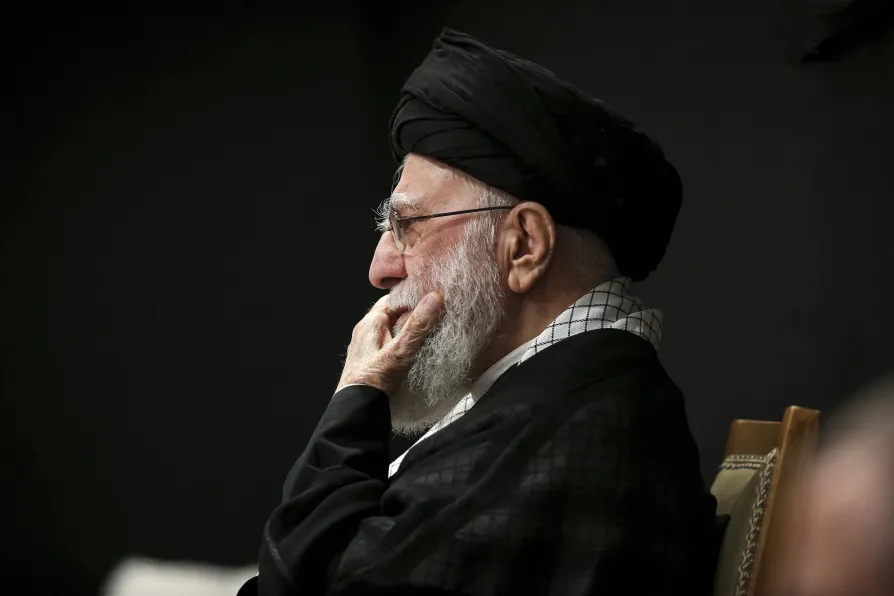Error message
An error occurred while searching, try again later.
 Supreme Leader Ayatollah Ali Khamenei attends a mourning ceremony commemorating the death anniversary of the Prophet Muhammad's grandson, Hussein, in Tehran, Iran, on Saturday, July 6, 2025. Photo: Office of the Iranian Supreme Leader via AP
Supreme Leader Ayatollah Ali Khamenei attends a mourning ceremony commemorating the death anniversary of the Prophet Muhammad's grandson, Hussein, in Tehran, Iran, on Saturday, July 6, 2025. Photo: Office of the Iranian Supreme Leader via AP
IRAN’S Supreme Leader Ayatollah Ali Khamenei made his first public appearance at the weekend since the 12-day war between Israel and Iran began, attending a mourning ceremony on the eve of Ashoura.
Ayatollah Khamenei’s absence during the war suggested the Iranian leader, who has final say on all state matters, had been in seclusion in a bunker — something not acknowledged by state media.
Iranian TV showed him waving and nodding to the chanting crowd, which rose to its feet as he entered and sat at a mosque next to his office and residence in the capital, Tehran.
There was no immediate report on any public statement made. Iranian officials such as the parliament speaker were present. Such events are always held under heavy security.
The United States inserted itself into the war by bombing three nuclear sites in Iran and suggested it might target the ayatollah himself.
On June 26, shortly after a ceasefire began, Ayatollah Khamenei made his first public statement in days, saying in a pre-recorded statement that Tehran had delivered a “slap to America’s face” by striking a US air base in Qatar, and warning against further attacks by the US or Israel on Iran.
Iran has acknowledged the deaths of more than 900 people in the war, as well as thousands of injured. It has also confirmed serious damage to its nuclear facilities.
Iran’s president ordered the country on Wednesday to suspend its co-operation with the International Atomic Energy Agency. Israel launched the war accusing Iran of trying to develop nuclear weapons. It then targeted residential areas, defence systems, military officials, atomic scientists and academics.
In retaliation, Iran targeted more than 550 ballistic missiles at Israel. Israel admitted to 28 deaths caused by the attacks. The Israelis banned media coverage but social media posts revealed significant damage in many areas. Five Israeli military sites were hit by Iran, but strict censorship on reporting military matters means the extent of damage to them is unknown.










